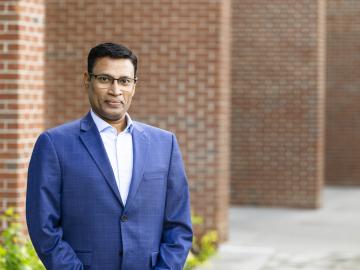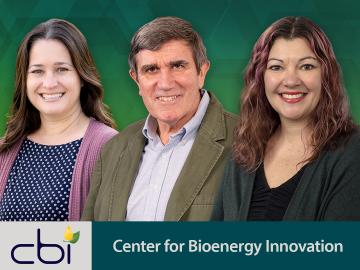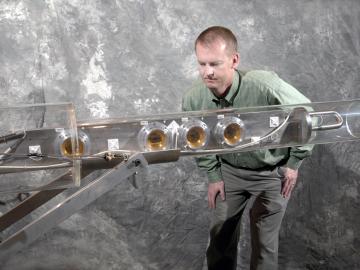
Filter News
Area of Research
News Type
News Topics
- (-) Biotechnology (25)
- (-) Energy Storage (32)
- (-) Neutron Science (82)
- 3-D Printing/Advanced Manufacturing (56)
- Advanced Reactors (12)
- Artificial Intelligence (77)
- Big Data (45)
- Bioenergy (68)
- Biology (80)
- Biomedical (42)
- Buildings (30)
- Chemical Sciences (35)
- Clean Water (16)
- Composites (11)
- Computer Science (111)
- Coronavirus (19)
- Critical Materials (5)
- Cybersecurity (14)
- Education (2)
- Emergency (3)
- Environment (116)
- Exascale Computing (51)
- Fossil Energy (6)
- Frontier (44)
- Fusion (38)
- Grid (32)
- High-Performance Computing (81)
- Hydropower (6)
- Isotopes (33)
- ITER (4)
- Machine Learning (37)
- Materials (51)
- Materials Science (55)
- Mathematics (8)
- Mercury (7)
- Microelectronics (3)
- Microscopy (23)
- Molten Salt (2)
- Nanotechnology (17)
- National Security (60)
- Nuclear Energy (66)
- Partnerships (36)
- Physics (34)
- Polymers (9)
- Quantum Computing (35)
- Quantum Science (48)
- Security (16)
- Simulation (42)
- Software (1)
- Space Exploration (13)
- Statistics (2)
- Summit (40)
- Transportation (30)
Media Contacts

From decoding plant genomes to modeling microbial behavior, computational biologist Priya Ranjan builds computational tools that turn extensive biological datasets into real-world insights. These tools transform the way scientists ask and answer complex biological questions that advance biotechnology breakthroughs and support cultivation of better crops for energy and food security.

The Center for Bioenergy Innovation, or CBI, at the Department of Energy’s Oak Ridge National Laboratory has promoted Melissa Cregger and Carrie Eckert to serve as chief science officers, advancing the center’s mission of innovations for new domestic biofuels, chemicals and materials.

Van Graves, an engineering manager at ORNL, is celebrating 40 years of dedicated service leading a diverse range of prominent engineering projects at ORNL and internationally.

Using the Frontier supercomputer, a team of researchers from the Massachusetts Institute of Technology conducted large-scale calculations to chart the isospin density of a neutron star across a range of conditions. Their work provides new insights into how pressure and density interact within neutron stars, offering important predictions about their inner workings.

Jesse Labbé aims to leverage biology, computation and engineering to address societal challenges related to energy, national security and health, while enhancing U.S. competitiveness. Labbé emphasizes the importance of translating groundbreaking research into practical applications that have real-world impact.

Scientists at Oak Ridge National Laboratory and the University of Colorado Boulder used a gene-silencing tool and a large library of molecular guides to understand how photosynthetic bacteria adapt to light and temperature changes. They found that even partial suppression of certain genes yielded big benefits in modifying the stress response of wild microbes.
Vilmos Kertesz, senior staff in the Biosciences Division at ORNL, has received a 2025 Al Yergey Mass Spectrometry Scientist Award from the American Society for Mass Spectrometry. The award recognizes his contributions to the fields of analytical chemistry and mass spectrometry.
Robert “Bob” Hettich, an ORNL Corporate Fellow, is a pioneer in using mass spectrometry to uncover how microbes interact within complex environments and influence larger systems like plants and humans. A founder of the field of metaproteomics, he leads research that supports bioenergy, environmental resilience and health through advanced protein analysis.

Scientists at the Department of Energy’s Oak Ridge National Laboratory recently welcomed Vanderbilt University colleagues for a symposium on basic science research, with a focus on potential collaborations in the biomedical and biotechnology spaces.
Daniel Jacobson, distinguished research scientist in the Biosciences Division at ORNL, has been elected a Fellow of the American Institute for Medical and Biological Engineering, or AIMBE, for his achievements in computational biology.


